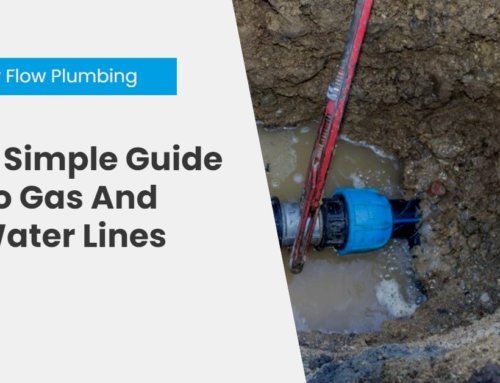If your garbage disposal suddenly stops working, don’t panic, it’s often something simple. Most issues come from a tripped reset button, jammed flywheel, clogged drain, or power problem, not a total breakdown. With a few easy checks, you can often get it running again in minutes.
This guide will walk you through the most common reasons garbage disposals fail, how to fix them safely, and when it’s time to call a professional plumber. Whether your unit won’t turn on, hums without grinding, drains slowly, or smells bad, you’ll find practical solutions that save time, stress, and repair costs.
Quick Overview: Common Garbage Disposal Problems and Fixes
| Problem | Likely Cause | Fast Fix |
|---|---|---|
| Won’t turn on | Power issue, tripped breaker, faulty switch | Check plug, reset button, and circuit breaker |
| Humming but not grinding | Jammed flywheel or overheated motor | Turn off power, manually free flywheel, press reset |
| Leaking water | Loose gasket, cracked housing, drain connection | Tighten fittings or replace seals |
| Draining slowly | Clogged drain or dull blades | Clean drain trap, flush with vinegar and hot water |
| Smells bad | Trapped food debris or bacteria | Use citrus, vinegar, or ice cube cleaning |
| Keeps tripping reset | Overheating or short circuit | Clear jams, let motor cool, reset unit |
| Vibrates or rattles | Loose mount or debris inside | Tighten mounting ring and inspect for obstructions |
1. Why Won’t My Garbage Disposal Turn On?
Possible Causes
If your garbage disposal does absolutely nothing—no sound, no hum—it’s usually due to a power problem. This could be a tripped breaker, unplugged cord, or faulty wall switch. Many disposals also have a built-in reset button that automatically trips when the motor overheats.
How to Fix It
-
Make sure the unit is plugged into a working outlet.
-
Press the reset button (a red or black button) on the bottom of the disposal.
-
Check your home’s breaker panel for a tripped switch.
-
If it still doesn’t work, test the outlet with another small appliance.
-
If the outlet works, the problem could be inside the disposal’s internal wiring or switch – time to call a pro.
Prevention Tip
Avoid overloading the disposal with large amounts of food at once, and always run cold water while grinding. This helps keep the motor from overheating and tripping the reset button.
2. Why Does My Garbage Disposal Hum But Not Grind?
Possible Causes
A humming sound usually means the disposal has power but the flywheel or impeller is jammed. When this happens, the motor hums but can’t spin, which can cause overheating and damage if left on.
How to Fix It
-
Unplug the unit or switch off the breaker.
-
Locate the small hex hole underneath the disposal.
-
Insert an Allen wrench and turn it back and forth to free the jammed flywheel.
-
After freeing it, press the reset button and turn the unit back on.
-
Run cold water and test it.
If it still hums, the motor might be burned out and require replacement.
Prevention Tip
Never grind fibrous materials like celery stalks, corn husks, or banana peels. These easily wrap around the impeller and cause jams.
3. Why Is My Garbage Disposal Leaking?
Leaks are one of the most common issues homeowners face. Depending on where the leak is coming from, the repair can range from tightening a connection to replacing the entire unit.
Common Leak Sources
-
Top leaks: From the sink flange (mounting area)
-
Side leaks: From the drain or dishwasher hose connection
-
Bottom leaks: From cracks in the disposal housing
How to Fix It
-
Top leak: Tighten the mounting bolts or reapply plumber’s putty around the sink flange.
-
Side leak: Tighten the hose clamps or replace the rubber gasket where the drainpipe connects.
-
Bottom leak: Unfortunately, this means the disposal’s internal seal is broken, and the unit must be replaced.
Prevention Tip
Always run cold water when grinding food. Hot water can soften rubber gaskets and increase vibration, leading to leaks over time.
4. Why Is My Garbage Disposal Draining Slowly?
Possible Causes
A slow drain means food waste, grease, or debris has built up in the drain trap (P-trap) or discharge pipe. Over time, this can create stubborn clogs.
How to Fix It
-
Disconnect power to the disposal.
-
Place a bucket under the sink.
-
Remove the P-trap and discharge pipe.
-
Use a brush or plumbing snake to clear the blockage.
-
Reconnect everything and run hot water to test the flow.
Pro Tip: Avoid chemical drain cleaners, they can corrode metal parts and void warranties.
Prevention Tip
Flush your disposal with hot water and dish soap weekly. For deeper cleaning, use baking soda and vinegar to dissolve buildup naturally.
5. Why Does My Garbage Disposal Smell Bad?
Possible Causes
Bad odors come from trapped food particles decaying inside the unit or drain line. These particles stick to the blades and rubber splash guard over time.
How to Fix It
-
Natural cleaner: Pour ½ cup of baking soda and 1 cup of vinegar. Wait 10 minutes, then rinse with hot water.
-
Citrus clean: Grind up lemon or orange peels for a fresh scent.
-
Blade sharpening: Drop a few ice cubes and a tablespoon of rock salt, then run the unit with cold water.
Prevention Tip
Clean your disposal weekly and avoid letting food sit in it. Running it briefly with cold water after each use keeps it clean and odor-free.
6. Why Does My Garbage Disposal Keep Tripping the Reset Button?
Possible Causes
If you’re constantly pressing reset, your unit might be overheating or short-circuiting due to overuse, blockages, or a failing motor.
How to Fix It
-
Turn the unit off.
-
Let it cool for 10–15 minutes.
-
Press the reset button to restart.
-
If it trips again, look for jams or electrical issues.
Prevention Tip
Avoid running the unit for long periods. Most disposals are designed for short, 30-second cycles.
7. Why Is My Garbage Disposal Vibrating or Rattling?
Possible Causes
Excessive vibration often means something’s loose – either the mounting assembly or an object stuck inside.
How to Fix It
-
Inspect the mounting ring under the sink; tighten any loose screws.
-
Check for foreign objects like silverware or bottle caps inside.
-
Ensure the sink flange is secured tightly with plumber’s putty.
Prevention Tip
Always turn off the unit before removing objects and never use your hands—use tongs or pliers instead.
When Should I Replace My Garbage Disposal?
Sometimes, repair just isn’t worth it. Replacement might be the smarter option if:
-
The unit is over 8–10 years old
-
You notice bottom leaks or smoke
-
It frequently jams or overheats
-
It makes grinding noises even when empty
Newer models are more efficient, quieter, and use less energy – making them a solid long-term investment.
How to Keep Your Garbage Disposal Running Smoothly
Need Repair Service for Garbage Disposal?
If your garbage disposal has stopped operating and you have been unable to resolve the problem, it is time for professional plumbing repair. New Flow Plumbing will inspect your equipment to establish the exact cause of your trash disposal’s failure and make the required repairs to get it back up and running or install a new unit if you prefer.
FAQs

Arman Grigoryan
Founder & President of New Flow Plumbing
Arman Grigoryan is the founder and president of New Flow Plumbing, proudly serving Los Angeles, Sacramento, and surrounding areas. With extensive experience in plumbing diagnostics, he leads a skilled team specializing in advanced sewer and drain camera inspections to quickly identify problems and deliver lasting solutions. Arman is dedicated to using the latest technology to provide reliable service, honest answers, and dependable results for every customer.




